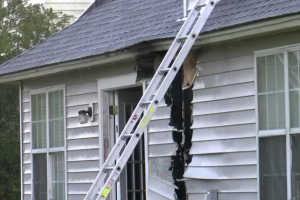Facts About Lighting that You Should Know
Did you now that: Lightning strikes in 2015 cost $790 million in insured losses? (According to the Insurance Information Institute).
Lightning is not always taken seriously, but it should be. It’s an occasional safety risk, but it can be a serious life-threating disaster. Here are some facts that prove just how dangerous it can be.
1. During a thunderstorm, lightning can strike up to 10 miles away from the area of rainfall.
2. Lightning causes an average of 55-60 fatalities yearly.
How Hot Is a Lighting Strike: The air surrounded by a lightning strike can be as hot as 50,000 degrees Fahrenheit. (That’s even hotter than the sun!) A single strike of lightning can be up to 100 million volts of electricity.
What State Sees the Most Lightning: Florida and other Gulf Coast states see the most lightning, however, the whole U.S. experiences about 25 million flashes of lightning spread throughout the country.
How to Stay Safe in a Lighting Storm: During a lightning storm, the inside of your home or office is the safest place to be, but you still must be aware of things that can carry a shock or a current. Don’t touch anything that can conduct electricity, such as:
· Wired phone lines
· Metal surfaces, such as an outside door
· Anything connected to water lines (plumbing system)
· Anything served by gas lines: gas water heaters, ovens, furnaces or fireplaces
How fast can lighting travel? Lightning travels at 220,000,000 miles per hour. By the time you see it strike something near you, it’s gone. Something to remember, is that light travels faster than sound, so the audible area of the strike zone can be deceiving.
How fast does the sound of thunder travel? The sound of thunder only travels 750 miles per hour. That’s a big difference! Thunder isn’t always a good indicator of the area of potential danger from a lighting strike. When you know that lighting is nearby, take cover indoors. Don’t wait for the thunder to get louder (or closer to you) before you go indoors.
Common areas of the home that can be damaged by heavy storms and lighting: After a damaging storm, inspect the roof and attic areas. Then check utility rooms to see that there isn’t a problem with water, gas, or electrical system components.
Install surge protection devices as a precaution. Lightning strikes on a nearby power line are a frequent cause of power surges. Using surge protectors, combined with a good grounding system should help protect from most electrical surges. (Note: Surge protectors do not suppress a surge; it only diverts the surge to the ground.
When lighting is in the area, take it seriously and take cover immediately. If you know someone whose home has been impacted by a thunderstorm or lighting, call Archer Restoration Services. We give estimate on home restoration projects. If you home can be restored, we work with your insurance company to make it like new. Archer Restoration Services wants to be your hero!










